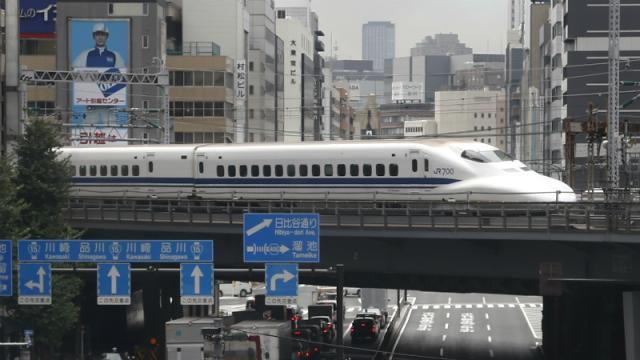The shinkansen — Japan’s bullet train that brought high-speed rail to the world in 1963 — is as symbolic for the nation as sushi and cherry blossoms. Prime Minister Shinzo Abe wants to export it across the world. And so far, he seems to be doing just that.
Although high-speed rail has flourished in countries like Japan, China, Germany, and France for decades, the transportation innovation is gaining more ground recently. Both developing nations and advanced economies like the US are now aggressively pursuing the technology. Japan’s pushing hard to be the number-one high-speed rail supplier.
Earlier this year, we reported on how JR Central, the company behind Japan’s shinkansen, is working with private companies in Texas to build a near-exact shinkansen replica linking Dallas and Houston. Since then, more places across the world have started working with Japan to bring the bullet train to their cities, as well.
India’s the latest example. It chose Japan over China to collaborate on building a bullet train that will join Mumbai and Ahmadabad for $US15 ($21) billion, expected to cut travel time between those two cities from eight hours to two. This past May, it was revealed that the shinkansen is being exported to Thailand, as well. Next up, on the heels of the Indian victory, Japan’s pushing to build yet another shinkansen in a two-nation deal that will join Kuala Lumpur, Malaysia and Singapore.
Japan’s not stopping at plain ol’ high-speed trains, either. After breaking a train speed record earlier this year with its new, even faster maglev train, Prime Minister Abe has revealed he wants to help America build its own maglev joining Baltimore and Washington, DC, even offering to cover half of the $US10 ($14) billion price tag. US Transportation Secretary Anthony Foxx even travelled to Japan in November to test-ride the maglev himself.
Of course, Japan isn’t the only place in the world that knows how to do high-speed rail — and how to do it well. China’s been running a maglev train in Shanghai since 2004, and that’s technology still considered a futuristic fantasy ripped from Asimov in many parts of the world. And non-maglev high-speed trains have been serving Western Europe for years.
What makes shinkansen different? In the over 50 years it’s been running, there have been zero accident-related injuries or deaths for passengers. It also has phenomenal anti-quake technology, which is crucial in a Pacific Rim straddler like Japan. That’s infrastructure that beefs up the sales pitch to other seismically active locations, like California, Chile, or Indonesia. (California started construction on its own high-speed rail earlier this year.)
One caveat: These countries that are inheriting shinkansen (or any high-speed rail system) must be properly trained on how to run it. The shinkansen is often celebrated worldwide for its average delay of a mere six seconds, but a lot of that has to do with the general gold standard level of excellent for Japanese customer service.
In the US, high-speed rail remains somewhat controversial: Some argue it’s way too expensive, and that in spread-out countries like America, investing in this kind of infrastructure is impractical. We’ll see how it shakes out.
Image: AP Photo/Shizuo Kambayashi, File
